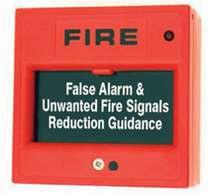Fire Safety: Looking Backward to Move Forward Though the process and products for fire safety have improved over the decades, the attention over fire safety regulatory measures continues. Since the 1800s, active fire protection, such as automatic sprinkler systems and passive resistance building construction, which compartmentalizes fires, have been part of fire safety standards. The National Fire Protection Association (NFPA) was established in 1896 to develop guidelines for implementing fire protection systems and create standards and codes to enforce their use.
Standards Provide Guidelines for Enforceable Codes From the Triangle Shirtwaist Factory fire in 1911 to the Cocoanut Grove nightclub fire in 1942 and the high-rise fire at MGM Grand in 1980, fire has always been a topic of concern for enterprises, organizations and society as a whole. While these tragedies have had unfathomable injury and death tolls, these and other fire tragedies have also brought a greater awareness of fire and life safety and fire protection product development into the world. With every error and misstep from these tragedies comes an opportunity to learn how to do better for building occupants. Safety organizations and manufacturers of fire-resistant building products have gained greater knowledge to create safer spaces. Standards have been developed from best practices and implemented through hardworking volunteer committees to save lives, along with the development of products that slow progression of fire, deadly smoke, and toxic gases giving occupants the critical extra time to get to safety. 42
The NFPA 80 standard harkens back to 1916, when it was known as The Committee on Protection of Openings in Walls and Partitions. The formal name was adopted in 1959 and is recognized as one of the most important fire protection standards ever created. It regulates the installation and maintenance of opening protective in walls, including all fire rated doors. NFPA 80 embraces the compartmentalization design practices within buildings to prevent the spread of fire, referred to as "passive" fire protection. It is a significant lifesaving standard and has always been an integral part of International Building Code (IBC) and other model building codes. The NFPA 80 standard is typically updated every three years. The current iteration of the standard requires inspections when the initial door installation is complete, after any subsequent maintenance is performed, and on an annual basis. The IBC, a part of the International Code Council (ICC), which is the leading source of codes, standards, and building safety solutions February 2021 - www.visionmediahitech.com



















